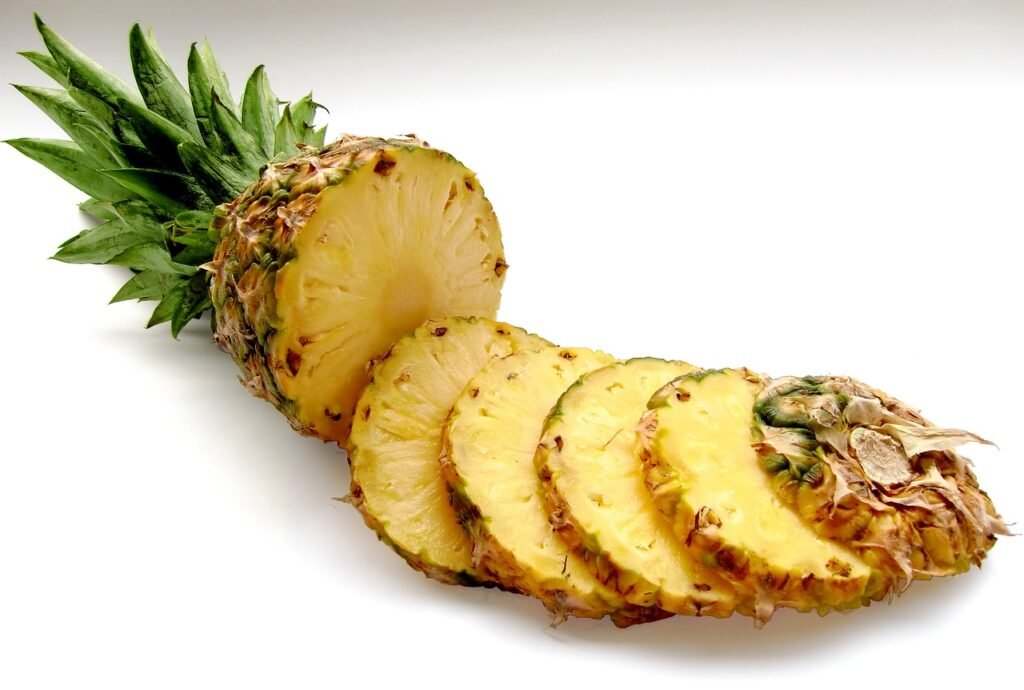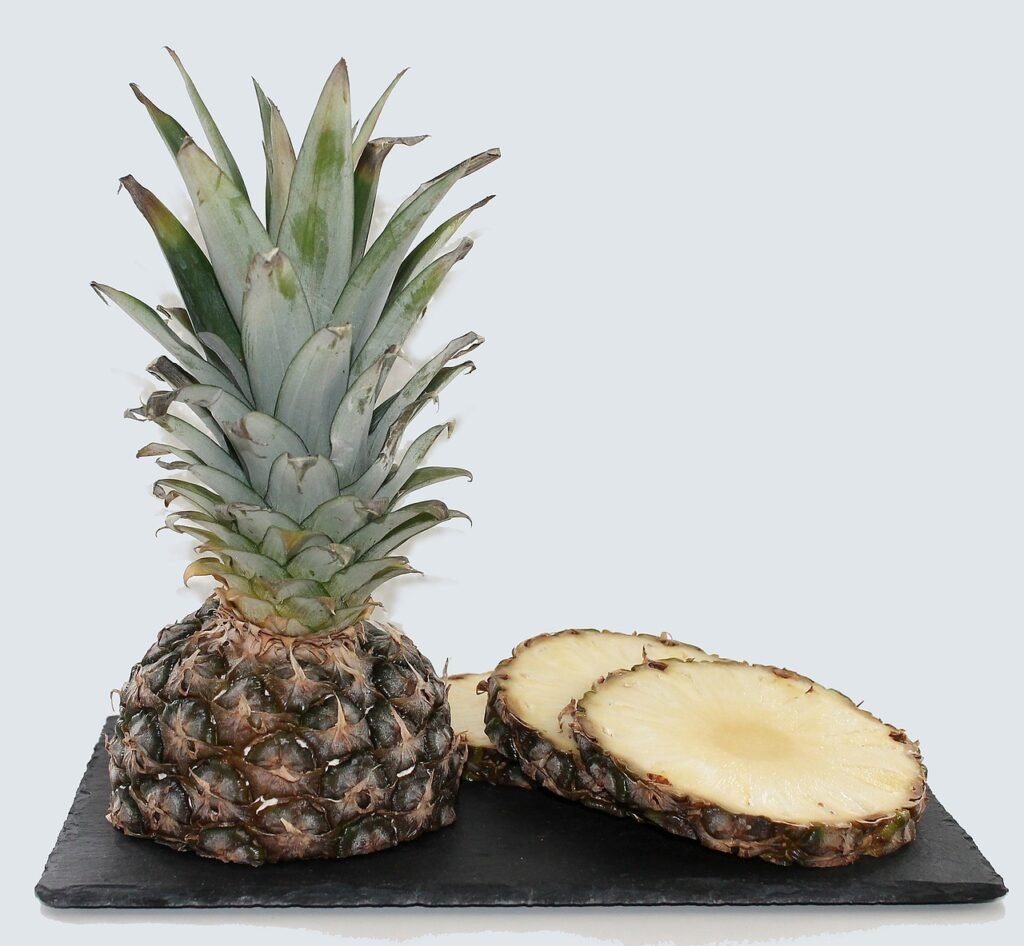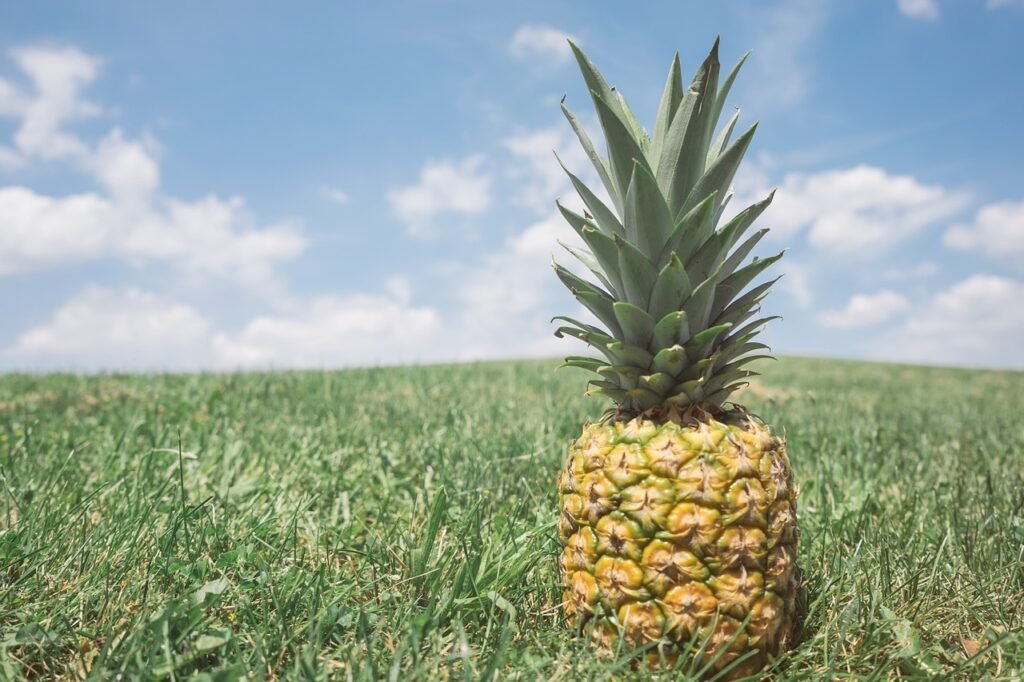Did you know pineapples have some pretty incredible facts surrounding them? There’s so much more to these delicious fruits than meets the eye. If you thought you knew everything about pineapples, think again! In this blog post, we will be revealing 10 shocking pineapple facts you didn’t know. From their history to their origin to their health benefits, these facts about pineapples will leave you wanting more. Read on to discover the amazing truth about pineapples!
1. Pineapples and their origins
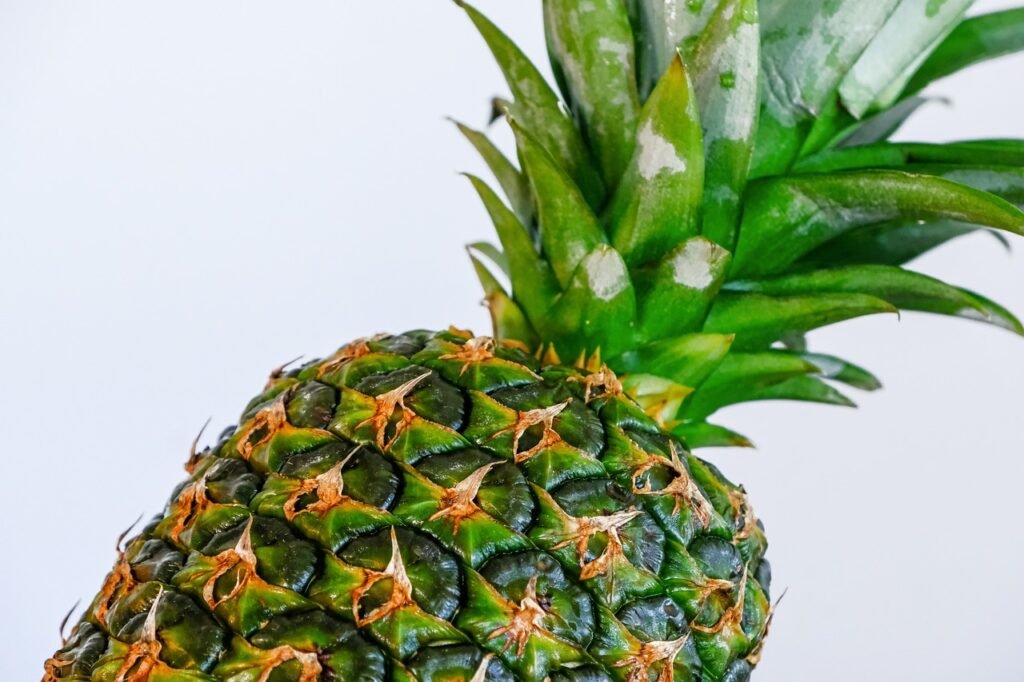
Pineapples have a fascinating origin story that takes us back to the lush tropical regions of South America. Native to Paraguay, southern Brazil, and parts of Uruguay and Argentina, pineapples have been cherished by these regions for centuries. The native peoples of these areas, such as the Guarani and Tupinambá tribes, cultivated and consumed pineapples long before European explorers ever set foot on their shores.
When Christopher Columbus encountered pineapples during his voyage to the Americas in 1493, he brought them back to Europe, where they quickly became a symbol of luxury and hospitality. European nobility displayed them as centerpieces at banquets and parties, showcasing their wealth and sophistication. It wasn’t until the 18th century that pineapples were successfully cultivated in European hothouses, making them more accessible to the general public.
In the 19th century, pineapples made their way to other tropical regions around the world, such as Hawaii and the Philippines. Today, the largest producers of pineapples are countries in Southeast Asia, including Thailand, the Philippines, and Indonesia.
Pineapples’ journey from the rainforests of South America to your local grocery store is truly remarkable. Their rich history and cultural significance make them a truly unique fruit that continues to delight and captivate people worldwide. So the next time you bite into a juicy, golden slice of pineapple, remember the long and vibrant journey it has taken to reach your plate.
2. The symbolic history of pineapples
Pineapples have a symbolic history that goes beyond their delicious taste. Throughout the centuries, pineapples have represented much more than just a tropical fruit. During the European Renaissance, pineapples were considered a status symbol of wealth and hospitality. The rarity and exoticism of pineapples made them a coveted fruit among European nobility, who would display them at banquets and parties to impress their guests. Pineapples became a visual representation of opulence and sophistication.
In the American colonies, pineapples also held a symbolic meaning. When hosts displayed a pineapple at their front door or on their table, it was a sign of welcome and hospitality. This tradition carried on into the 18th century, when pineapples adorned furniture, wallpaper, and even clothing as a symbol of hospitality and friendliness.
Today, the symbolic history of pineapples continues to influence our culture. We often see pineapples in home decor, fashion, and even as a motif in art. The pineapple’s symbolism of warmth, friendship, and welcome remains strong, reminding us of the rich history associated with this tropical fruit.
So, the next time you come across a pineapple, remember the cultural significance it holds. Beyond its tangy sweetness, the pineapple is a fruit that has captivated people’s imaginations for centuries. It represents much more than just a tasty treat; it symbolizes a warm and welcoming spirit that transcends time and borders.
3. Pineapple anatomy
Pineapple anatomy is just as fascinating as the fruit itself. Have you ever wondered what lies beneath that prickly exterior? Let’s take a closer look at the anatomy of a pineapple.
The first thing you’ll notice is the spiky, rough skin that covers the pineapple. This protective layer is made up of small, hexagonal-shaped scales called “eyes.” Each eye is actually a small, separate flower, which will eventually develop into a fruit if pollinated. These eyes give the pineapple its distinctive appearance and texture.
Beneath the skin, you’ll find the juicy, golden flesh of the pineapple. This is where all the sweetness lies. The flesh is made up of many individual fruits, which are fused together to form the fruit. Each fruitlet contains a tough, fibrous core running through its center, which should be removed before eating.
As you cut into a pineapple, you’ll also notice the strong, tropical aroma that fills the air. This fragrance comes from the enzymes present in the fruit, which not only contribute to its unique flavor but also have a tenderizing effect when used in cooking.
Now that you know the ins and outs of pineapple anatomy, you’ll appreciate this tropical fruit even more. From its prickly skin to its juicy flesh, the pineapple is a marvel of nature. So the next time you enjoy a refreshing slice of pineapple, take a moment to appreciate the intricate anatomy that lies within.
4. Nutritional value of pineapples
Pineapples not only taste amazing, but they also pack a punch when it comes to nutrition. Let’s dive into the incredible nutritional value of this tropical fruit.
First off, pineapples are a great source of vitamin C, with one cup providing more than 100% of your daily recommended intake. Vitamin C is important for a healthy immune system and can help protect against illness and infection.
Pineapples are also rich in manganese, which is essential for the metabolism of carbohydrates, proteins, and fats. Manganese also plays a role in supporting healthy bone development and maintaining a healthy nervous system.
Another notable nutrient in pineapples is bromelain, a group of enzymes that has been shown to have anti-inflammatory properties. Bromelain can aid in digestion by breaking down proteins and may help reduce inflammation in the body.
In addition to these key nutrients, pineapples are low in calories and fat, making them a great choice for those watching their weight. They also contain dietary fiber, which can help promote healthy digestion and keep you feeling full.
So next time you indulge in some delicious pineapple, know that you’re not only satisfying your taste buds but also giving your body a boost of important nutrients. Pineapples truly are a nutritional powerhouse!
5. Pineapples and health benefits
Pineapples are not only delicious and refreshing, but they also offer a plethora of health benefits. These tropical fruits are packed with nutrients and can be a valuable addition to a balanced diet. One of the most notable health benefits of pineapples is their high vitamin C content. Just one cup of pineapple provides over 100% of your recommended daily intake of this essential nutrient. Vitamin C is well-known for its role in supporting a healthy immune system and can help ward off illness and infection. In addition to vitamin C, pineapples contain bromelain, a group of enzymes with powerful anti-inflammatory properties. Bromelain has been shown to reduce swelling, ease joint pain, and improve digestion. It can also assist in breaking down proteins, making it beneficial for those with digestive issues. Furthermore, pineapples are a good source of manganese, an essential mineral that plays a crucial role in metabolism and bone health. Manganese is involved in the production of enzymes that are responsible for metabolizing carbohydrates, proteins, and fats. Moreover, pineapples are low in calories and fat, making them a guilt-free snack or addition to your favorite recipes. They also contain dietary fiber, which aids in digestion and can help you feel fuller for longer. So, the next time you’re enjoying a tropical treat, know that pineapples not only satisfy your taste buds but also offer a wide range of health benefits. From boosting your immune system to reducing inflammation, pineapples are a nutritious and delicious choice for supporting your overall well-being.
6. Pineapple cultivation
Pineapple cultivation is a fascinating process that involves careful attention to detail and a deep understanding of the fruit’s needs. Growing pineapples requires a tropical climate with plenty of sunlight and warm temperatures. This is why countries in Southeast Asia, such as Thailand, the Philippines, and Indonesia, are the largest producers of pineapples today.
The first step in pineapple cultivation is planting the pineapple crowns, which are the leafy tops of mature pineapples. These crowns are carefully removed from the fruit and planted in nutrient-rich soil. It takes about 18-24 months for the pineapple plant to fully mature and produce fruit.
During this time, pineapple farmers must closely monitor the plants, ensuring they receive adequate water and nutrients. Pineapple plants have shallow root systems, so they need regular irrigation to thrive. Farmers also need to protect the plants from pests and diseases, such as mealybugs and fungal infections.
Once the pineapple plant reaches maturity, it produces a single fruit, known as the pineapple. This fruit is harvested by hand, with workers carefully cutting the ripe pineapples from the plants. The harvested pineapples are then sorted and packed for transport to local markets or processing facilities.
Pineapple cultivation is a labor-intensive process that requires patience and dedication. From planting the crowns to harvesting the ripe fruit, every step of the process is crucial in producing high-quality pineapples. Thanks to the hard work of pineapple farmers around the world, we can enjoy the delicious taste of this tropical fruit.
7. Pineapple industry facts
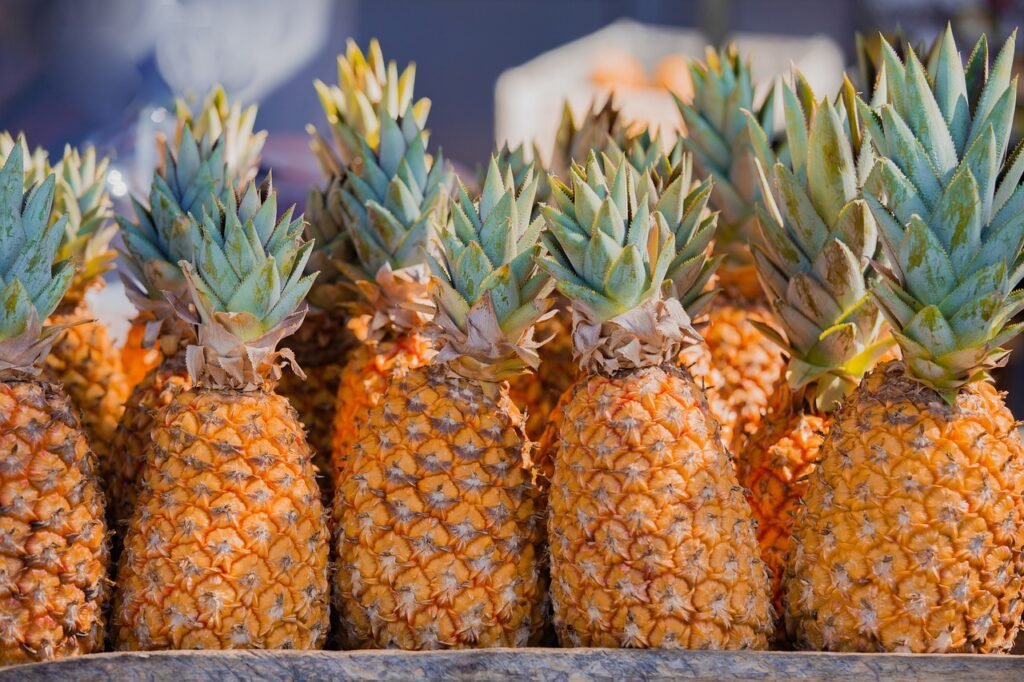
The pineapple industry is a global force to be reckoned with. These tropical fruits are in high demand and play a significant role in various countries’ economies. Here are some fascinating facts about the pineapple industry that will leave you amazed.
- The global pineapple production is led by countries in Southeast Asia. Thailand, the Philippines, and Indonesia are the largest producers, accounting for the majority of the world’s pineapple exports.
- Pineapples are grown on large plantations, with thousands of acres dedicated to their cultivation. These plantations employ a significant number of workers, providing employment opportunities and supporting local communities.
- The pineapple industry is a multi-billion dollar industry. Pineapples are not only consumed fresh but are also used in various processed forms, such as canned pineapple, pineapple juice, and pineapple concentrates. These products are sold globally and contribute to the industry’s economic success.
- The pineapple industry faces challenges such as pests and diseases. Farmers must implement sustainable farming practices and invest in research and development to combat these issues and ensure the production of high-quality pineapples.
- The pineapple industry is constantly evolving. Farmers are continually striving to improve cultivation techniques, increase yields, and develop new pineapple varieties that are disease-resistant and have better flavor profiles.
- Pineapples are also a popular ingredient in the beverage industry. They are used in the production of fruit juices, smoothies, cocktails, and even alcoholic beverages. The versatility of pineapples makes them a sought-after ingredient in the culinary world.
- The pineapple industry contributes to environmental sustainability efforts. Pineapple plantations often implement practices such as organic farming, water conservation, and responsible waste management to minimize their impact on the environment.
The pineapple industry is a fascinating and complex industry that plays a significant role in the global market. Its economic impact, innovation, and commitment to sustainability make it a vital component of agriculture and trade. So the next time you enjoy a pineapple, remember the journey it took to reach your plate and the industry behind it.




